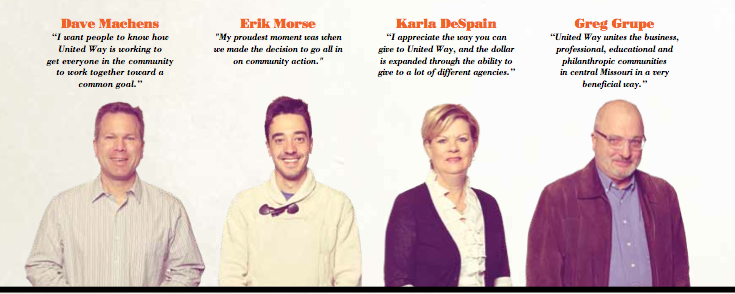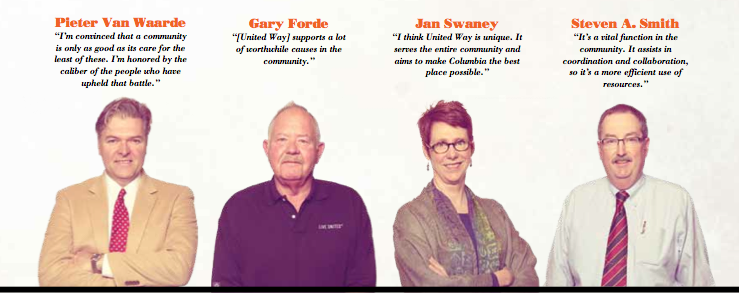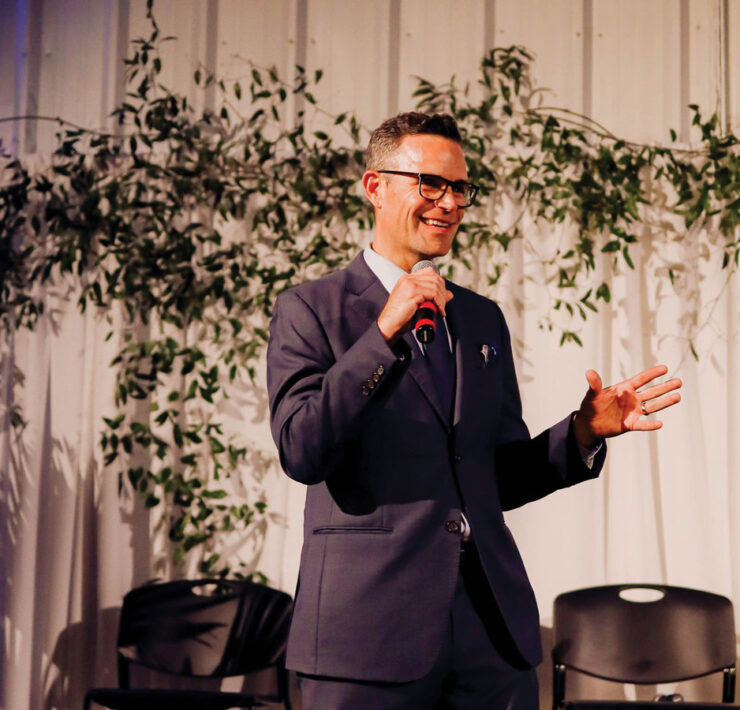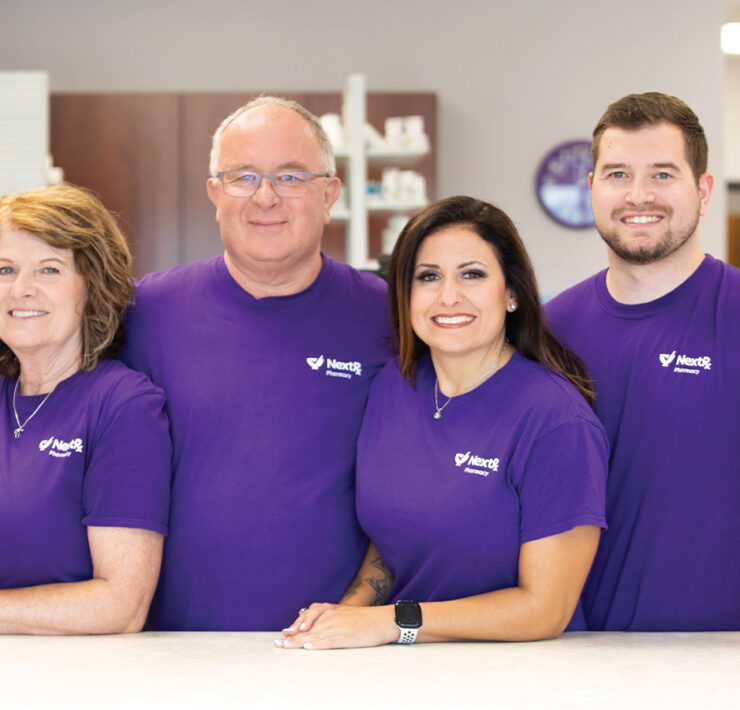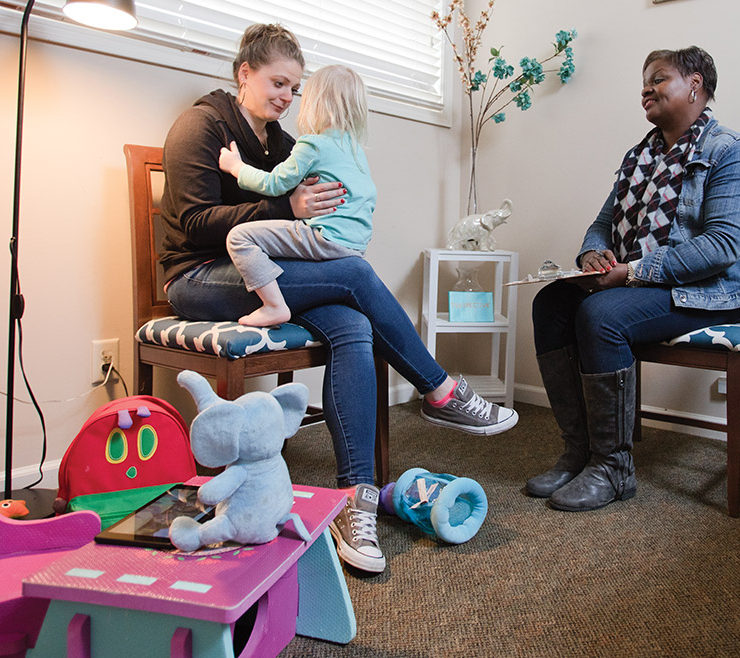Heart of Missouri United Way pins down results
In 1985, Tim Rich was a commanding officer in the Salvation Army and polishing off his funding proposal to send to Heart of Missouri United Way. Nearly 30 years later, he’s running the organization from which he once sought funds.
Rich has been Heart of Missouri United Way’s executive director since December 2009 and has seen the organization through a major overhaul in the way it serves its community. For more than 65 years, Heart of Missouri United Way operated primarily as one of United Way’s 1,200 fundraising organizations that sought to treat the symptoms of poverty. It focused on the needs of agencies it funded and measured accountability in number of people served.
When Rich took over in 2009, however, the agency began to move to a model of service it calls Community Impact. In Community Impact, United Way looks to identify mid-Missouri’s biggest needs and treat the root causes of its problems. It still funds agencies to help address problems, but the focus has shifted from the agencies to the populations those agencies serve.
After studying the community and identifying goals for education, income levels, health and safety net services, Community Impact volunteers realized their goals all started with youth. Twenty-seven percent of children in Boone County live in poverty, compared to just 4 percent of seniors.
“Everyone agreed that in any of this we wanted to do, you have to focus on youth and specifically poor and at-risk youth,” Rich says.
Breaking the status quo
Education, heath, income and social safety net emerged as Heart of Missouri United Way’s primary goals.
The Community Impact targets for education include increasing the number of youth who enter school ready to succeed, read proficiently by third grade and successfully transition in and out of middle school. For 2013, the organization allocated $771,127, or 24 percent of its total dollars, to agencies with concrete education strategies.
Other impact targets received similar amounts of money. The agency financed $617,796 to heath agencies, $681,000 in safety net agencies and $278,305 in income agencies.
To find agencies to receive the Community Impact funding, Heart of Missouri United Way went public with its Community Impact goals in early 2012. It received 109 proposals requesting a total of more than $6 million. In December 2012, 29 agencies received the green light for funding.
Community Impact threatened the status quo. Some legacy agencies that had been funded for years, such as the Boy Scouts, did not receive the Community Impact funding. Several new agencies received funding as well.
The new funding strategy didn’t please everyone. Donors used to be able to designate that their funds go to a specific agency, but that option is now gone. Rich says that under the old funding model, about 12 percent of Heart of Missouri United Way’s donations had designations.
Although the organization has lost about $250,000 after removing the designations, Rich says he thinks removing designations helps the agencies work better together.
“[Designations] became more of a popularity contest internally so agencies could prove to United Way how important they were,” Rich says.
The new funding methods focus on the needs of the whole community. Priority went to agencies that could measure improvements in the populations they serve.
The agency’s 40 board members backed the shift.
“My proudest moment was deciding to go all in on Community Impact…and doing everything we needed to do to see results,” board member Erik Morse says.
Going all in
Many United Ways around the nation, including the one in Kansas City, use the Community Impact service model, but Heart of Missouri United Way is unique in its approach.
“We’ve talked to at least six other United Ways in communities about the size of ours,” Rich says. “None of them have gone 100 percent into Community Impact like we have. I think we’re the only one in the country that has done it.”
The move has lost the agency some donors. The capital campaign has come up short for the past two years, a result that Rich attributes in part to the weak economy. Heart of Missouri United Way dipped into its reserves for its 2013 budget crunch but was forced to cut internal staff by 16 percent when its 2014 campaign was $400,000 short of its $3.4 million internal goal. This year, funded agencies will receive about 10 percent less funding than they did in 2013.
“I think we’re at a new normal,” Rich says of the $3 million the 2014 campaign raised. “We’ve narrowed our focus to at-risk youth and their families. That’s not the way United Way has always been, and so our funds have dropped.”
Rich says the agency’s new focus on measurable returns is winning over some donors who were used to the agency’s old ways.
“While we’re disappointed about campaign results, we’re not discouraged about what we’re doing,” Rich says. “The more we have this conversation, and the more we help people understand what we’re trying to get to, the more we have people who didn’t like it and were mad at us say, ‘Oh, this makes total sense.’”
Columbia businesses are encouraged to support Heart of Missouri United Way through its Live United 365 Small Business Circle. Contact Cathy Atkins at [email protected] or 573-443-4523 for more information.



